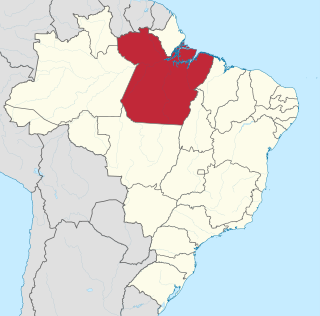 W
WKuhikugu is an archaeological site located in Brazil, at the headwaters of the Xingu River, in the Amazon Rainforest. The area around Kuhikugu is located in part of the Xingu National Park today. Kuhikugu was first uncovered by anthropologist Michael Heckenberger, working alongside the local Kuikuro people, who are the likely descendants of the original inhabitants of Kuhikugu.
 W
WLagoa Santa(Holy Lagoon) is a municipality and region in the state of Minas Gerais, Brazil. It is located 37 km north-northeast from Belo Horizonte and belongs to the mesoregion Metropolitana de Belo Horizonte and to the microregion of Belo Horizonte. In 2020 the estimated population was 65,657.
 W
WLapa do Santo is an archaeological site located in the northern part of the Lagoa Santa karst, in the state of Minas Gerais in east-central Brazil. It documents human presence since ca. 12000 years ago presenting three discrete occupation phases that correspond to the early, middle and late Holocene. Llithic technology, zooarchaeology, and multi-isotopic analyses indicate groups of hunter gathers with low mobility and a subsistence strategy focused on gathering plant foods and hunting small and mid-sized mammals. The use of Lapa do Santo as an interment ground started between 10.3-10.6 cal kyBP with primary burials. Between 9.4-9.6 cal kyBP central elements in the treatment of the dead were tooth removal, mutilation, defleshing, exposure to fire and possibly cannibalism, all to reduce the body ahead of reburial of the remains while adhering to strict rules. In the absence of monumental architecture or grave goods, these groups were using parts of fresh corpses to elaborate their rituals. As part of this funerary agenda Lapa do Santo presents the oldest case in the New World of decapitation. Another type of burial included pits filled with separated bones of a single individuals presenting abundant evidence of perimortem fracturing. Lapa do Santo also presents a rare instance of securely dated rock art: an early Holocene low relief anthropomorphic figure depicting a phallus.
 W
WThe Parque Arqueológico do Solstício, referred to in academic sources as AP-CA-18, is an archaeological park located in Amapá state, Brazil, near the city of Calçoene. It contains a megalithic stone circle, colloquially known as the Amazon Stonehenge, consisting of 127 blocks of granite, each up to 4 meters tall, standing upright in a circle measuring over 30 meters in diameter at the bank of the Rego Grande river on a hilltop. Archaeologists believe that this site was built by indigenous peoples for astronomical, ceremonial, or burial purposes, and likely a combination. The function of this megalithic site is unknown, much like other sites such as Stonehenge, a much older site in Great Britain.
 W
WPedra Furada is an important collection of over 800 archaeological sites in the state of Piauí, Brazil. These include hundreds of rock paintings dating from circa 12,000 years before present. More importantly, charcoal from very ancient fires and stone shards that may be interpreted as tools found at the location were dated from 48,000 to 32,000 years before present, suggesting the possibility of a human presence tens of thousand of years prior to the arrival of the Clovis people in North America.
 W
WCaverna da Pedra Pintada, is an archaeological site in northern Brazil, with evidence of human presence dating ca. 11,200 years ago.
 W
WThe Pedra Pintada or "Painted Rock", is a large rock located in the state of Roraima, Brazil. It is 85 metres long, 35 metres high and 30 metres wide, and is found in the Boa Vista savanna. There are many pictograms and other archaeological evidence inscribed on the walls of the rock.
 W
WSerra da Capivara National Park is a national park in the Northeastern region of Brazil. The area has many prehistoric paintings.
 W
WToca da Tira Peia is a rock shelter site, located in the municipality Coronel José Dias, Piauí state, near the Serra da Capivara National Park, Brazil, thought to hold evidence of prehistoric human presence in South America dating to 22,000 years ago.
 W
WThe Valongo Wharf (Portuguese: Cais do Valongo) is an old dock located in the port area of Rio de Janeiro, between the current Coelho e Castro and Sacadura Cabral streets.